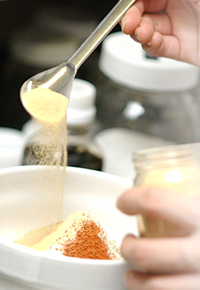
Plastic packaging growth to benefit from innovation
Plastic is expected to outpace paper as the packaging material of choice in the US food sector as industry leverages the advantages of the petroleum-based material, according to a new report.
Innovations such as improvements in degradable materials and newer grades of poly ethylene terephthalate (PET) bottle resin are some of the developments that are helping to boost the growth of plastic as the packaging material of choice, according to Fredonia.
Plastic packaging growth is expected to outpace that of paper through 2010 in all competitive markets covered in the study. The use of plastic packaging will expand by nearly 3 per cent per year through2010, the analyst forecasts.
When assessed by weight of material, plastic is expected to increase its share of the market to 53per cent in 2010, the analyst stated. The percentage understates plastic’s share since less of the material is required than paper in most packaging applications due to its lighter weight.
The increased use of plastic will result from the material’s competitive cost and performance advantages over paper. The most rapid gains in market share are anticipated in soy and other non-dairy beverages and the pet food segments.
The frozen food, fruit beverages and detergent markets are also expected to be growth areas for plastic packaging, Fredonia stated.
“Robust growth is also expected for single-serving plastic milk bottles, driven by conversions from half-pint gable top cartons to plastic bottles in quick service restaurants and school lunch programs,” Fredonia stated.
Meanwhile paper packaging will post marginal advances or continue to decline in most competitive markets through 2010 due to inroads from plastic.
However, Fredonia forecasts above average growth in the foodservice, dairy and soy milk segments, with organic milk also a growth niche.
Both plastic and paper packagers are continuing to innovate to meet the changing needs of the market. In the plastic market, improvements in degradable materials should expand the range of packaging uses for those materials, a Fredonia spokesperson told FoodProductionDaily.com.
The development of newer grades of PET bottle resin made with reduced acetaldehyde has helped lower the migration of off flavors in bottled water, increasing its attractiveness.
Fredonia forecasts that degradable plastic demand will expand nearly 17 percent per year to 500 million pounds in 2010 due to a more competitive pricing structure, improved resin properties and widening applications.
Degradable plastics have the potential of capturing up to 20 percent of the existing market for plastic products, the spokesperson stated. The continued market expansion hinges on a competitive pricing structure and the ability of degradable plastics to be processed on conventional equipment will little or no alteration.
“Other stimulants include growing environmental awareness of and government policies favoring the use of sustainable natural resources,” the spokesperson stated.
For example, in 2005 the US Department of Agriculture established guidelines under which bio-based products will be given preference in procurement programs under the aegis of the federal government. Companies such as Wal-Mart have announced plans to replace a significant amount of conventional packaging with degradable plastic packaging for items such as fresh produce.
“Unique benefits must also be afforded the consumer in areas such as performance, convenience and environmental compatibility,” the spokesperson stated. “The primary objective of degradable plastics is to provide a more environmentally friendly alternative to plastics’ disposal, while lessening the nation’s dependence on non-renewable petroleum feedstocks.”
Food packaging is one of the leading uses for degradable plastics. However its use is relatively small compared to conventional materials.
Containers, films and foams made of biodegradable plastic resins are currently being used to enclose meats, dairy products, baked goods and produce. Other uses include disposable bottles and cups for water, milk, juices and beverages, Fredonia suggests.
In the paper packaging market, materials with improved barrier properties have been introduced, such as Stora Enso’sMultiflex product for stand-up pouches, the spokesperson stated.
Reference: http://www.foodproductiondaily-usa.com/news
